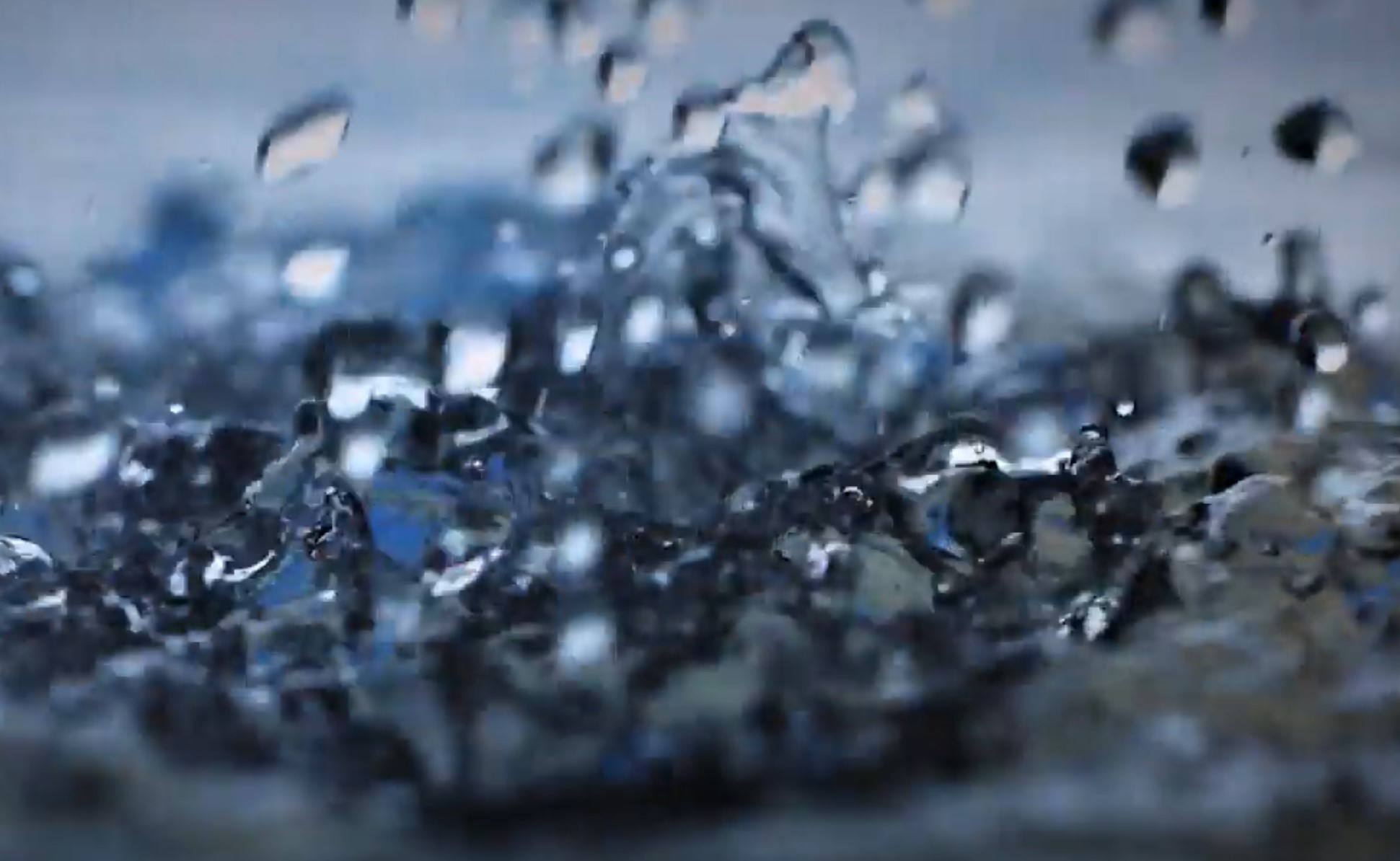When fear continually lives in the background of our existence, even though there is no obvious impending threat, we are likely to be trapped in a mood of anxiety.” – Dr. Ainslie Meares
Anxiety is a powerful emotional contributor to human behaviour and a root cause behind greed and selfishness. The history of the past 100 years can be interpreted as one of constant challenge and uncertainty, increasing underlying anxiety levels in the community and reducing our ability to respond effectively to big challenges.
If we understand the anatomy of persistent moods of anxiety and have tools to shift it then we can be more powerful as a change-maker. The more we build our capability to sustain and share the resourceful moods of curiosity and wonder, the more we can contribute to the spread of Regenerative Business.
Our anxious history
From at least the start of the 20th century, global events have increasingly challenged our sense of security and certainty. The early 20th century saw World War I and the Great Depression. These were followed as the century continued by World War II, and the Cold War and a range of regional conflicts.
Then as the 20th century ended and the 21st century started, the technology revolution accelerated, terrorism threats increased, and we had a Global Financial Crisis. Nature has added to our challenges, with tsunamis, earthquakes, floods and fires providing additional disruptions. Future concerns about longer term environmental changes simply add to the mix.
Anxiety – mood or emotion?
In this discussion, we are primarily concerned with a persistent mood of anxiety. We consider anxiety that comes and goes in response to specific circumstances to be a normal human emotion essential to our well being. What we wish to explore is the existence and persistence of a more subtle mood – the habit of anxiousness and its potential to limit regenerative business innovation.

Given the history of threats and uncertainties of the 20th century, many of us may be living in a mood of anxiety without really being aware of it. Our anxiety may not be our own, but learned from parents (or grandparents) who were the children of World War I, grew up through the Great Depression, World War II and started their families during the Cold War.
Anxiety changes behaviour
Our anxiety increases when there is threat that we don’t feel we have answers to – when we have a problem but don’t see solutions; or when we can only see solutions that will compromise the core issues that we care about – our concerns for comfort, self-esteem and achievement. So if we don’t see that there are solutions, or only perceive solutions that carry big costs, our anxiety increases.
When we live in unresolved anxiety, we tend to act differently. We automatically want to withdraw and to protect ourselves. We put more of our time and our energy into watching out for threats and getting ready to attack the source of the threat. We can end up putting a lot of time and energy into protect ourselves from perceived threats rather than acting towards positive solutions.
So anxiety pre-disposes us to play it safe and not take risks. And our protectiveness plays our in a range of behaviours – “…it provokes us into defensive attitudes such as aggression, timidity, suspicion, greed and selfishness, and so makes us a lesser person that we might have been.”
A detailed understanding of the anatomy of habitual moods of anxiety can give us access to ways to shift out of it. Learning to blend around anxiety can be a powerful tool for sustainability advocates and campaigners.
The anatomy of anxiety
The study of Ontology (how humans go about the process of being) provides a valuable insight into the structure of persistent moods of anxiety and ways to explore alternatives. The mood of Anxiety can be characterized as a strong desire for the certainty of an un-threatening future. At its’ heart there are two assessments:
- “The world is an uncertain, threatening place where bad things happen”; and
- “I will not be capable of coping if the worst happens and will not survive”
Ontology also emphasizes the power of the mood of anxiety as a deeply embodied way of being, one that operates unconsiously.. We can carry it subtly in our posture – our muscles are tensed in a constant readiness to react and protect our bodies, especially our heads and torsos. We live just a little bit “on the back foot” and out of balance without recognising it.
Not only can we carry anxiety – we can spread it or catch it quite unconsciously. As human beings mirror and match those around us in posture, not just in words. So we can find ourselves in un-resourceful moods that have little to do with our own circumstances, like an emotional influenza.
From anxiety to ???
Working with a mood of anxiety is about shifting our assessments about living in an uncertain world – challenging our habitual ways of thinking. Instead of accepting the core assessment “I will not cope in this threatening world”, we can use more positive language:
- “The world is uncertain place – it is interesting and fascinating to consider what the future may hold”.
- “I have the capacity to learn to deal successfully with life’s uncertainty. I am open to embracing the mystery of life.”
These assessments give us access to the powerful moods of Curiosity and Wonder – a new mindset where we accept uncertainty and exploring new possibilities. When we get curious, we get creative. We begin a quest – asking different questions based on the assessment that we can deal creatively and successfully with the uncertainty of the future.
We can be curious as we ask questions such as:
- I wonder how we could live comfortably AND sustainably?
- I wonder how we could work productively AND sustainably?
- I wonder what might be beyond sustainability?
- I wonder what it would look like to live and work in a regenerative economy?
- I wonder how we could find valuable ways to meet our customers’ needs in ways that restore our environment and allow our eco-system to regenerate?
- I wonder what new, regenerative products and processes we might develop?
Possibilities for regenerative practice
So what does this mean for sustainability practitioners and regenerative business coaches? (I wonder how you’ll find it useful?)
Some of the powerful possibilities we see include:
- Spreading the good news – learning to tell quality stories about exciting win/win/win ways forward. Develop strategies to defuse ambiguity and dilemmas to reduce anxiety.
- Explore your own moods – make sure you’re not an Anxiety carrier.
- Practice embodying resourceful moods such as Curiosity and Wonder. Spread it around.
- Learn to access and generate the moods of Curiosity and Wonder in working with individuals and groups, whether it’s in casual conversation, presentations or workshops.
Focus on ways forward
Anxiety particularly becomes dysfunctional if there aren’t credible ways forward. Powerful sustainability advocates offer credible ways forward. They take responsibility for creating hope.
I was at an Adelaide conference in 2009 where a well-known environmental speaker listed a range of pending catastrophes. He spoke really well, creating great energy in the room. Then we got to question time, and someone asked him “What can we do?”
The answer he gave was short and closed. The only thing he had to say was “I don’t know”. The energy in the room vanished. There he was, with a room full of coaches wanting to take action and he – the expert, the keynote speaker – had no possibilities for them to explore. To me, he lost a great opportunity.
We do know what directions to work towards, even if we don’t have all the answers. The design thinking has been done, and we have some pretty good ideas which way to head and how to get started. And we have evidence that regenerative business can be profitable business when it’s designed, planned and executed well.
This doesn’t mean that sustainability practitioners should claim to be experts with all the answers. What it does mean is that they’ll be more powerful if they know some ways forward and can tell powerful, relevant good news stories that will inspire and inform their audience.
Explore win/win/win possibilities
Part of our 20th century inheritance has been a set of assessments about “environment=cost”. Our initial “answers” were based in scarcity – turn off the air conditioner; turn down the heating; turn off the lights. The mis-conception that this is all there is to “the answer” is still surprisingly common, even in environmental circles.
Broaden your conversations to reduce the anxiety-increasing dilemmas inherent in win/lose solutions. Explore big-picture perspectives that give your audience a better understanding and more possibilities for win/win/win solutions that have financial, environmental and human benefits.
One of our stories is about a pair of invalid pensioners in Adelaide – their new solar power unit is going to pay their rates by selling power back to the grid, not just reduce their energy bills. They win and the environment wins. Less obviously:
- The power supplier has less need for big, inefficient power plants.
- The government wins because they don’t need an energy subsidy.
- Their community wins because they have a little more disposable income to share.
Isn’t that more exciting than “Turn your TV off at the wall…”?
Explore your own moods
Investigate what you say to yourself and how you feel. Make sure you’re not an unconscious Anxiety carrier. Turn up the volume on your internal commentator and find out:
- What are you saying to yourself about people as individuals?
- What are you saying to yourself about various groups or organizations?
- What are you saying to yourself about yourself and your capabilities?
Put your awareness on your body as well as your language:
- Where’s your centre of gravity? Are you in balance, or subtly “on the back foot”?
- What’s the level of muscle tension in your shoulders and neck? What’s your chin position?
- Are you carrying a subtle, protective hunch – or are you open to fascinating possibilities and relaxed and accepting of the current situation?
Practice resourceful moods
Explore and practice the moods of Curiosity and Wonder. Try making a daily practice of speaking the underlying assessments out aloud:
- I assess that I cannot predict with certainty what the future will bring.
- I declare my acceptance of uncertainty as part of the reality of life
- I assess the world, including its inherent uncertainty, to be interesting and fascinating.
- I assess I have the capacity to learn to deal with the uncertainty of life.
- I declare that I am a learner, with the desire to embrace the mystery of life, open to how I can deal with the unexpected.
Play “I wonder how I will…” as part of your regular personal practice. Be prepared to do lots of wondering rather than rush to action. You might explore some of these “I wonder how I will…” questions:
- I wonder how I will live more regeneratively?
- I wonder how I will influence my organization to explore regenerative practices?
- I wonder how I will contribute to a prosperous future for my community?
The player with the most flexibility wins
So next time you find your inner (or outer) conversations being about “selfish, greedy, short-sighted consumers/business/government/parents/GenY” take a pause. How are you making yourself feel? Are you helping your resourceful self find new ways to influence?










